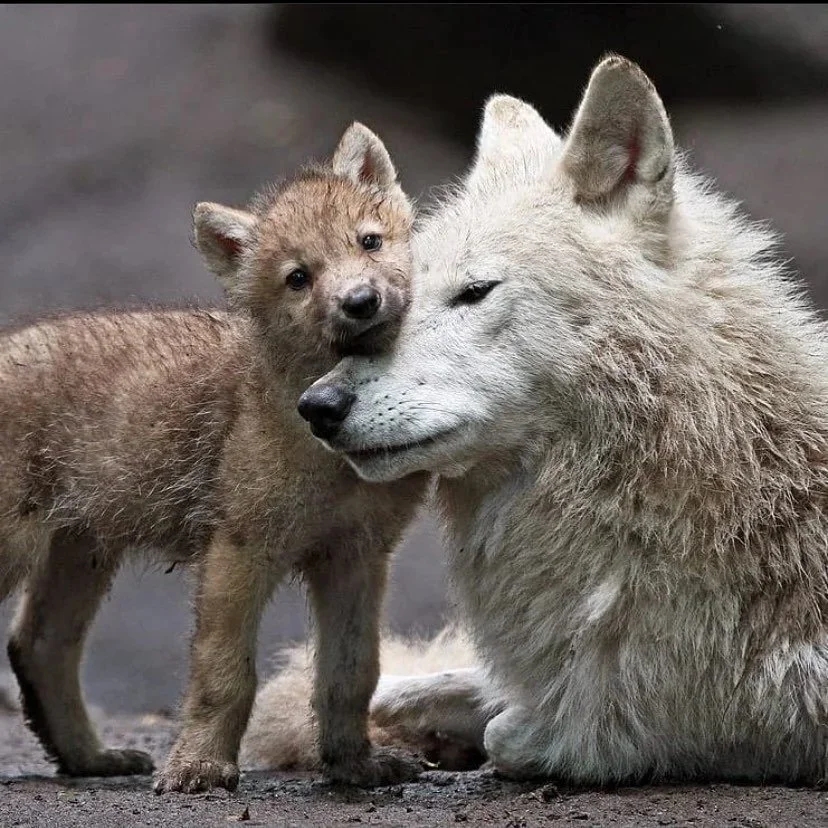How Long Have Dogs Been Mans’ Best Friend?
Saudi Arabian cave carvings depicting dogs on leashes dating to 7,000 BCE, considered to be the oldest depiction of human-dog interaction. These dogs are detailed with pointy snouts and ears, curled tails, and distinct color patterns.
Thanks to modern molecular dating and evolutionary chronologies, we know that humanity’s relationship with dogs stretches back thousands of years. How far, exactly? According to anthropologists, it is likely that Homo sapiens and canines developed a mutually beneficial relationship approximately 30,000-40,000 years ago. What was humanity doing back then, anyway? A lot of hunting! Ancient humans survived off of reindeer, mammoth, caribou and other large game animals as they sought refuge from the cold Glacial Period. Wolves were likely drawn to human leftovers and decided to set up camp alongside us. It is thought that “dogs themselves may have initiated a process that led to their eventual domestication by living commensally, or following along with humans and slowly adapting to life with our type.” Although wary at first, humans kept the wolves around for companionship, warmth, and resources such as fur. The close proximity between humans and wolves over generations is hypothesized to have encouraged more docile wolves - wolves who looked to their human companions for food and guidance. Anthropologist Brian Hare notes that “Wolves friendlier toward humans would've had a more reliable food source and a better chance of living on.” In exchange for food scraps wolves offered us protection from other animal threats, and we would soon find out that they were excellent laborers and hunters.
Humans and wolves hung out for a few thousand years and benefited from each others’ company. Where do dogs come in? How did massive, formidable predators end up with cute curly tails and floppy ears? It all starts with domestication. Although it is tricky to pin down, a 2021 study maintains that the first dogs were domesticated in Siberia circa 23,000 years ago by ancient north Siberians. To put this in context, plants and sheep were domesticated 10,000 years ago in Mesopotamia. The earliest record of cat domestication is dated to 7,000 years ago in Egypt. The domestication of dogs predates that of any other animal or plant! They have been by our side since the beginning, and interestingly we have influenced each others’ evolution and behavior.
Like human mothers, a mother wolf intuitively knows to provide for her young.
Wolves, dogs and humans share strong familial and social instincts, suggesting an interesting relationship between human and dog evolution. Modern humans mirror ancient canine traits such as pack hunting, social cooperation, territoriality, community support, and negotiation.
These traits are less common in our closest living primate relatives, chimpanzees. In an essay on human-wolf coevolution, zoologist Wolfgang Schleid muses: “Isn't it strange that, our being such an intelligent primate, we didn't domesticate chimpanzees as companions instead?” In other words, doesn’t it make sense to choose a companion that is more similar to us? Unfortunately, domestication is more complicated than that. While baby chimps are paraded as cute pets in Hollywood, wild animals are just that - wild. Half a century of research has documented violent tendencies in chimps that point to specific evolutionary adaptations toward aggression. Aggression and violence aided ancient African chimps in their competition with gorillas over food sources, and these tendencies remain in modern chimps. On the contrary, human evolution selected for social cooperation and amicability, as it was our ability to cooperate - not our aggression - that allowed humanity to thrive. Although very intelligent, Chimpanzees lack the sociability and friendliness needed to be domesticated. The ancient gray wolf, however, clearly demonstrated these same tendencies toward cooperation and complex sociality which allowed for an intimate relationship with humanity. In this sense, “domestication was reciprocal, as the animals in turn selected for behavioral or physical traits in humans, such as better communication with animals.”
The domestication of the dog was an integral point in human history, predating further animal and plant domestication by thousands of years. Our ancient friendship is written deep in the historical record and closely woven into the human psyche. After all, it is not so clear who domesticated who - without dogs, how human would we be?


